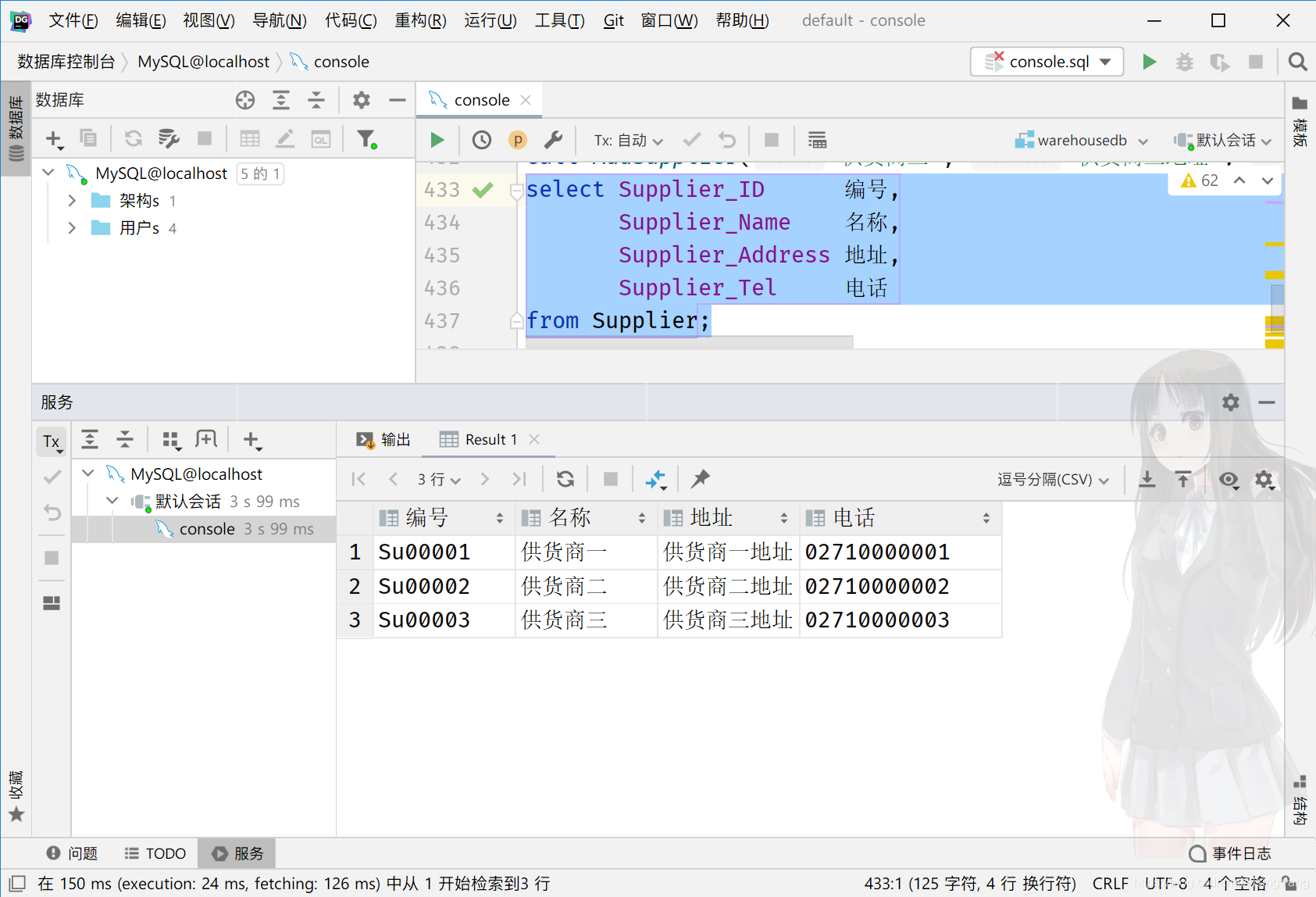1
2
3
4
5
6
7
8
9
10
11
12
13
14
15
16
17
18
19
20
21
22
23
24
25
26
27
28
29
30
31
32
33
34
35
36
37
38
39
40
41
42
43
44
45
46
47
48
49
50
51
52
53
54
55
56
57
58
59
60
61
62
63
64
65
66
67
68
69
70
71
72
73
74
75
76
77
78
79
80
81
82
83
84
85
86
87
88
89
90
91
92
93
94
95
96
97
98
99
100
101
102
103
104
105
106
107
108
109
110
111
112
113
114
115
116
117
118
119
120
121
122
123
124
125
126
127
128
129
130
131
132
133
134
135
136
137
138
139
140
141
142
143
144
145
146
147
148
149
150
151
152
153
154
155
|
create procedure Push(in ComputerName varchar(30), in WarehouseName varchar(30), in PushNumber int)
begin
declare ComputerID varchar(6);
declare WarehouseID varchar(6);
declare RecordsID int(7) zerofill;
declare CurrentNumber int;
declare UnitPrice float;
declare TotalMoney float;
PUSH:
begin
CheckOut:
begin
select Computer_ID
into ComputerID
from Computer
where Computer_Name = ComputerName
limit 1;
select Warehouse_ID
into WarehouseID
from Warehouse
where Warehouse_Name = WarehouseName
limit 1;
if ComputerID is null then
set @isSuccess = false;
leave PUSH;
end if;
if WarehouseID is null then
set @isSuccess = false;
leave PUSH;
end if;
select Number
INTO CurrentNumber
from Stock
where Stock.Computer_ID = ComputerID
and Stock.Warehouse_ID = WarehouseID;
select Computer_Unit_Price
into UnitPrice
from Computer
where Computer_Name = ComputerName;
set TotalMoney = UnitPrice * PushNumber;
end CheckOut;
PushProcedure:
begin
set @isSuccess = true;
if CurrentNumber is null then
begin
declare StockID int(5) zerofill;
set @isNew = true;
select max(cast(substr(Stock_ID, 2) as signed integer))
into StockID
from Stock;
if StockID is null then
set StockID = 1;
else
set StockID = StockID + 1;
end if;
insert into Stock
value (concat('S', StockID), ComputerID, WarehouseID, PushNumber);
end;
else
begin
select Stock_ID
into @CurrentID
from Stock
where Stock.Computer_ID = ComputerID
and Stock.Warehouse_ID = WarehouseID;
update Stock
set Number = Number + PushNumber
where Stock_ID = @CurrentID;
set @isNew = false;
end;
end if;
end PushProcedure;
end PUSH;
ReturnInfo:
begin
select max(cast(substr(InputRecords_ID, 2) as signed integer))
into RecordsID
from InputRecords;
if RecordsID is null then
set RecordsID = 1;
else
set RecordsID = RecordsID + 1;
end if;
if @isSuccess = true then
insert into InputRecords
values (concat('I', RecordsID), ComputerName,
WarehouseName, PushNumber,
TotalMoney, sysdate(), @isNew, true);
select concat('I', RecordsID) 记录编号,
ComputerName 请求入库电脑,
WarehouseName 仓库,
PushNumber 入库数量,
TotalMoney 总金额,
sysdate() 操作日期时间,
if(@isNew = true, '是', '否') 是否为新型号电脑,
'是' 是否成功入库;
else
insert into InputRecords
values (concat('I', RecordsID), ComputerName,
WarehouseName, PushNumber, null, sysdate(), null, false);
select concat('I', RecordsID) 记录编号,
ComputerName 请求入库电脑,
WarehouseName 仓库,
PushNumber 入库数量,
sysdate() 操作日期时间,
'否' 是否成功入库;
end if;
end ReturnInfo;
commit;
end;
|










